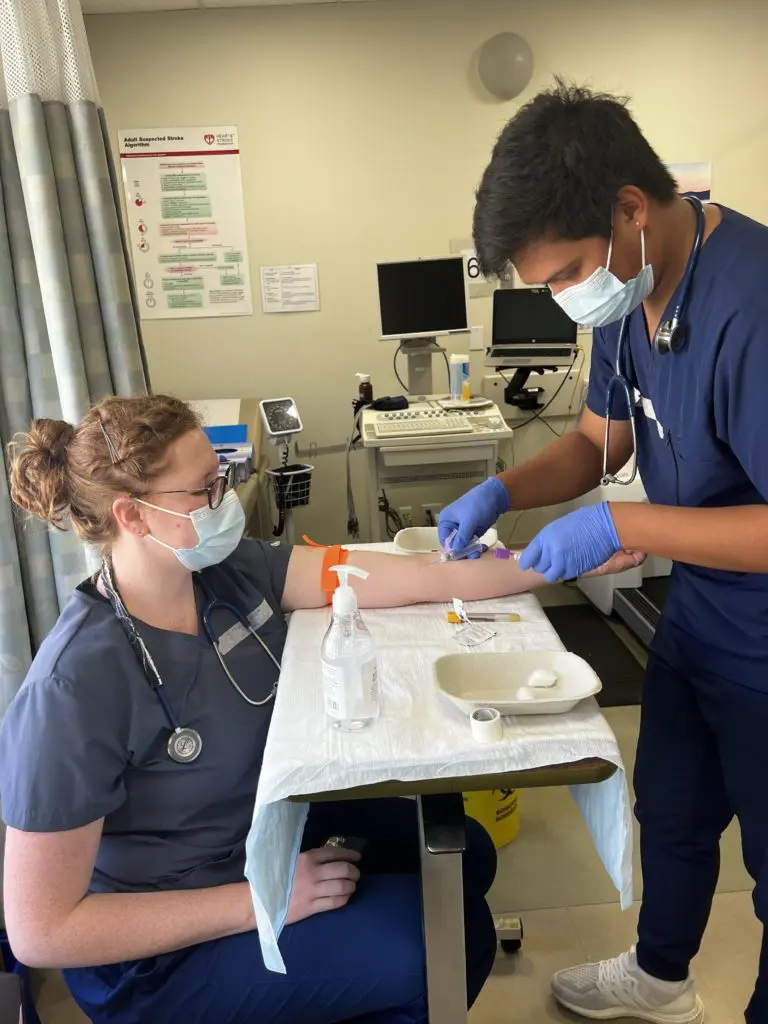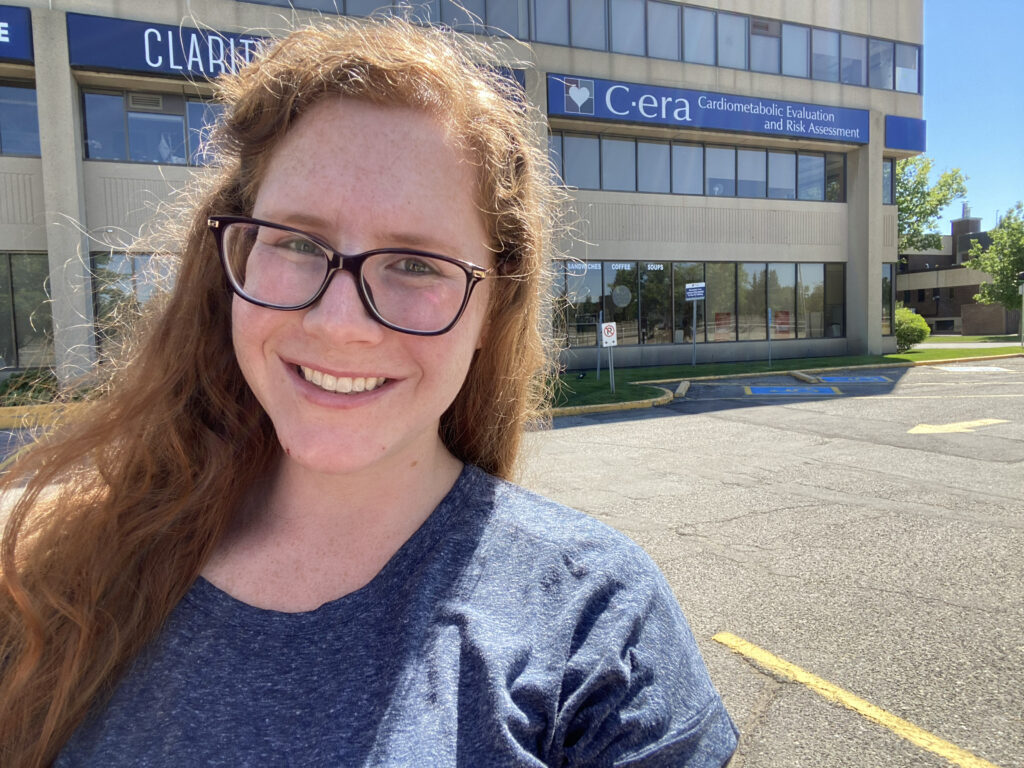Hi there, folks! I hope your new year is going well. As usual, time is flying, and a new month means a new blog post. Since the end of November, I’ve been completing my clinical preceptorship at the hospitals in Regina. Three months may initially sound like a long time, but when you break it down week by week, it’s incredible how much you learn!
How do hospitals use Holter monitoring?
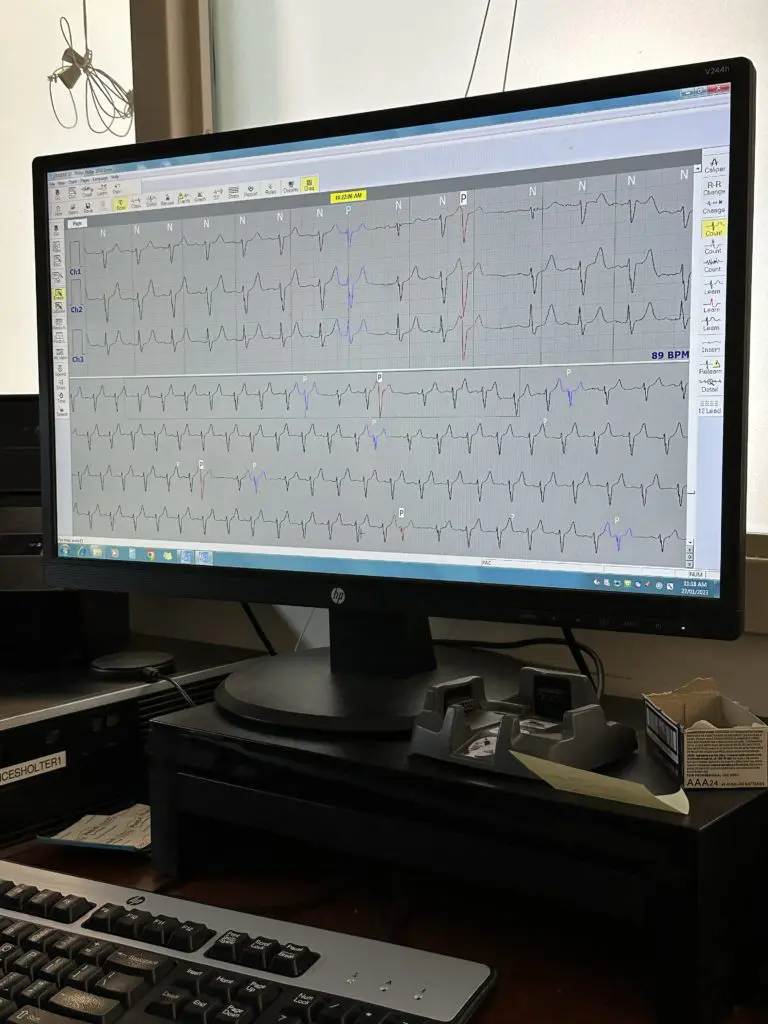
I spent my first three weeks focusing on learning the Holter scanning software that the hospitals use. While more intuitive than the software we learned at school, it still requires the Cardiology Technologist to review everything to ensure the software correctly labels beats and arrhythmias. The Technician also selects strips for the final report for the Cardiologist to view, which is essential in painting an accurate picture of the patient’s cardiac condition.
Cardiology Technologists look for ectopic beats, pauses, runs of atrial fibrillation, re-entry tachycardias, aberrant beats, and ventricular arrhythmias, to name a few. These things are important to identify to determine if the patient needs further tests, such as an electrophysiology study, or if they need medication adjustments for controlling their rate or arrhythmia. Between the scan and the patient diary, connecting patient symptoms with events on the Holter scan is valuable to determine whether their symptoms are cardiac-related or caused by something else.
Getting deep into treadmill exercise tests
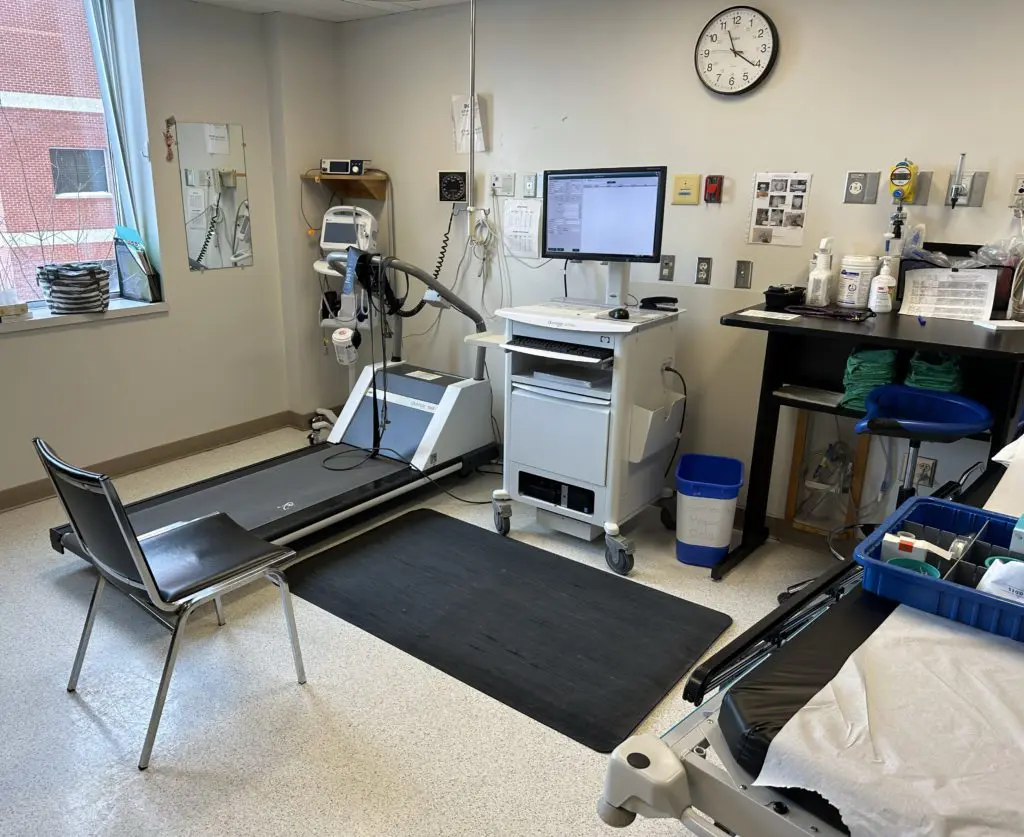
The next four weeks focused mainly on treadmill exercise stress tests. Each Cardiology Technologist in the stress lab tests anywhere from 6-16 patients daily, which means you can be on your feet bustling around for hours at a time. After prepping the patients with extra-sticky electrodes to help reduce artifacts in the recording, the Cardiology Technologist continually monitors the patient’s ECG for changes while exercising and periodically takes and records blood pressure during the test.
Changes in the patient’s ECG when exercising may suggest changes in perfusion of the heart muscle, represent blockages in the coronary arteries, or demonstrate an inappropriate electrical conduction response to exercise. The patient’s abilities, fitness, and comorbidities determine how long they can last on the treadmill as each stage increases in speed and incline.
While most tests are negative for ischemic changes, I still saw many interesting cases. There were non-sustained runs of ventricular tachycardia, people feeling faint and coming close to collapsing, rate-related bundle branch blocks and aberrancies, frequent ectopic beats, and ST depression. Again, the test results determine if the patient needs more tests to investigate coronary artery blockages or arrhythmias due to electrical abnormalities.
Cardiology Technologists have such a variety in their careers!
Speaking of more tests, I have also been able to explore other cardiac-related areas during my clinical. I spent time observing procedures in the pacemaker clinic, the electrophysiology (EP) lab, and the cardiac catheter lab! These different areas are related to the science of ECGs, which means there are more advanced career opportunities for Cardiology Technologists to branch into if they want to pursue more education and training.
In the device clinic, I saw how the Cardiology Technologists use their equipment to interrogate a pacemaker to ensure it’s working correctly for the patient and has enough battery life left. In the EP lab, I watched pacemaker device implants, battery/device changes, pacemaker lead implants, and arrhythmia studies and ablation procedures (during which the doctor uses 3-D mapping by catheter to help guide where to ablate…how cool is that?!).
During my day in the cardiac catheter lab, I watched Cardiovascular Technologists assist the Cardiologist in performing angiograms and stent implants, monitor the patient, and document the mapping of the coronary arteries and their blockages. It was so amazing to see the x-ray images of the coronary arteries light up on the screen after the dye injection. It’s phenomenal that something as small as a stent is inserted through a catheter to restore blood flow in an occluded artery.
My exciting future

Now in my last four weeks of clinical, I am focusing on honing my skills in hooking up leads more deftly and interpreting ECGs more rapidly. As with the rest of my developing skillset, it is all about merging theory learned with practical knowledge to be more effective in a clinical setting with various patients. My preceptors have been excellent in providing me with feedback and helpful advice, and I’m excited to call them my coworkers once I finish clinical!
Yes, you read that correctly! I’m pleased to say I have accepted a job at my clinical site upon completing my program at Stenberg! I know this will motivate me to study even harder for the national certification exam, and it’s reassuring that with all my hard work, I have truly secured my career as a Cardiology Technologist.

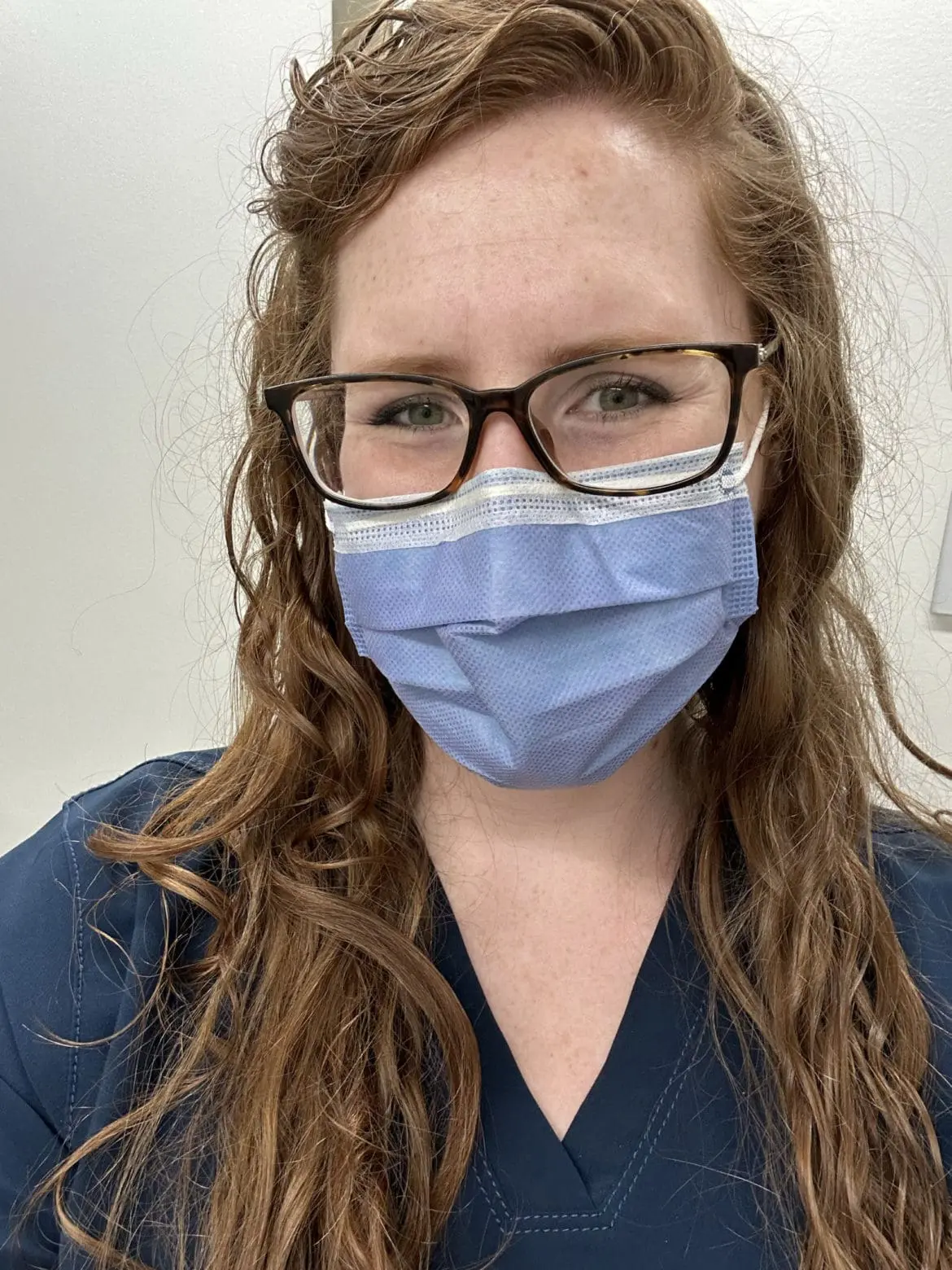


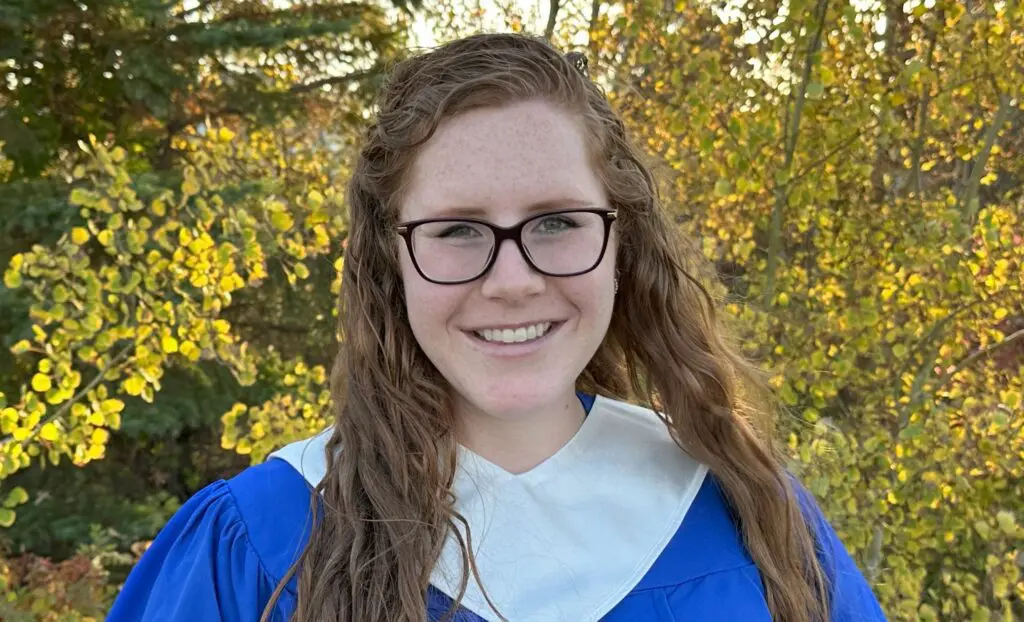

![An ECG demonstrates the extensive antero-septal-lateral myocardial infarction [heart attack] that Taryn witnessed.](https://stenbergcollege.com/wp-content/smush-webp/2022/12/ecg-1024x530.jpg.webp)

